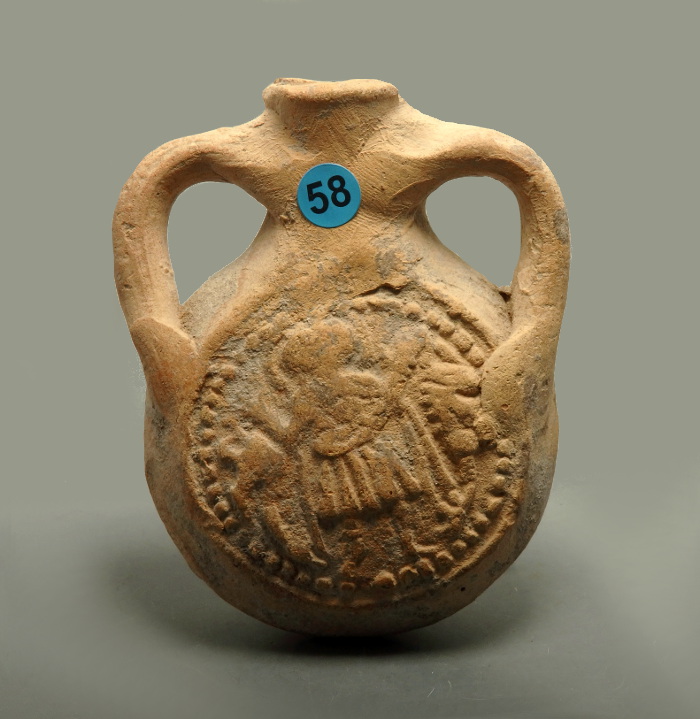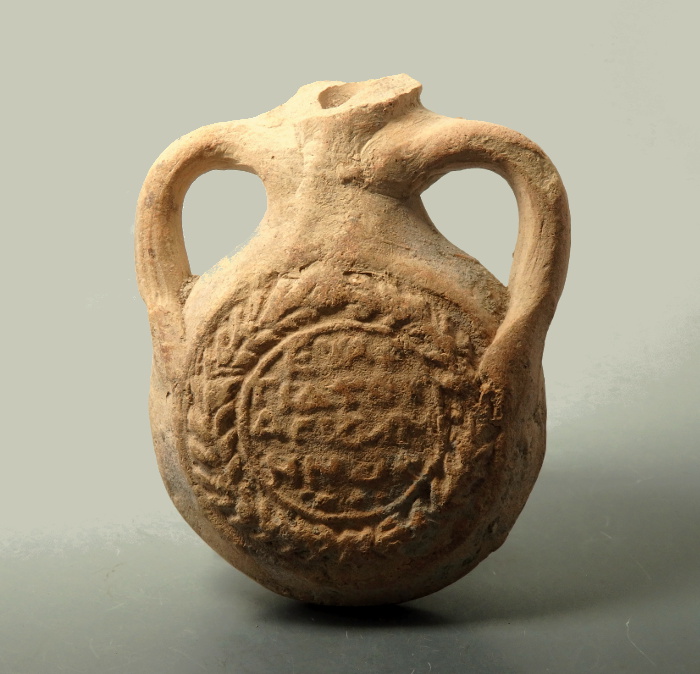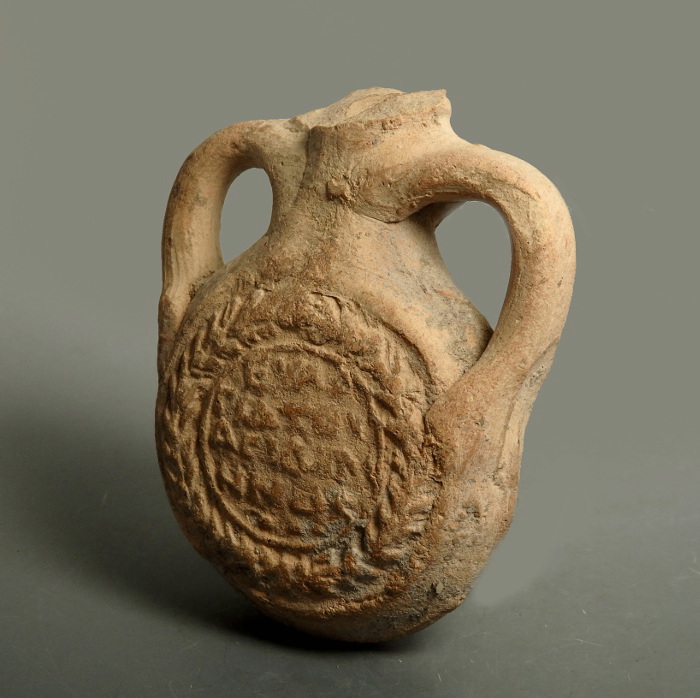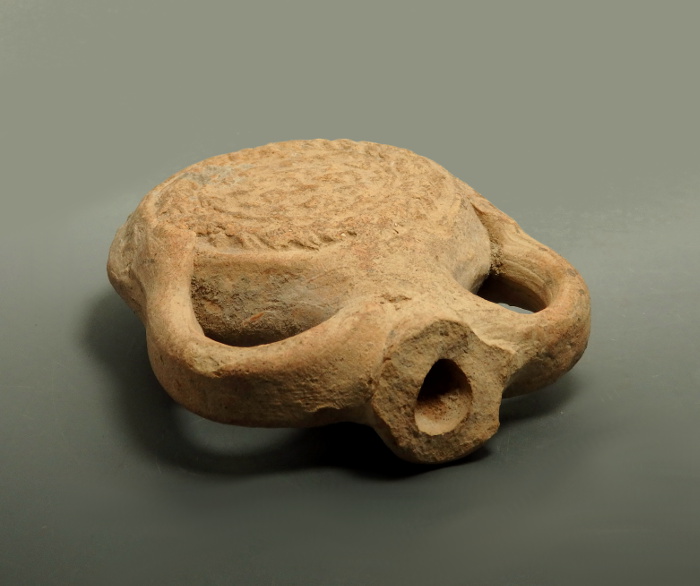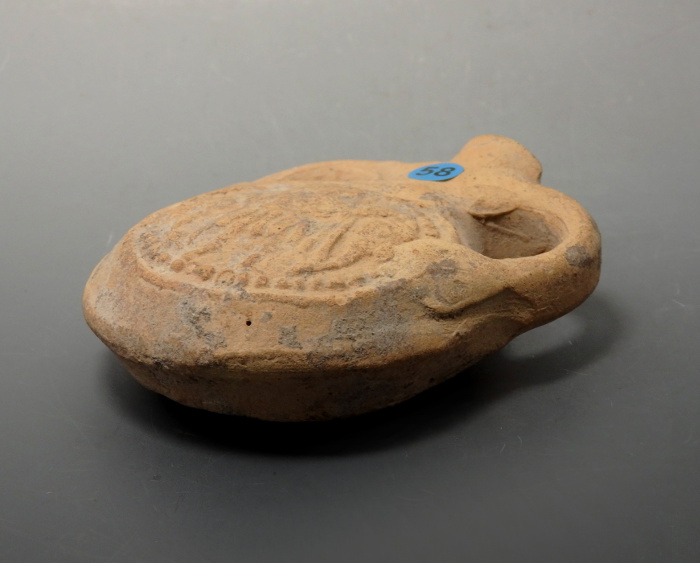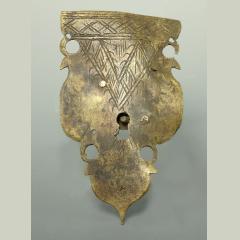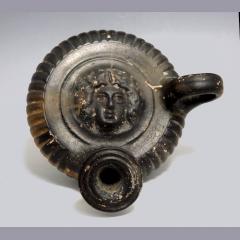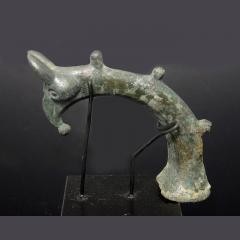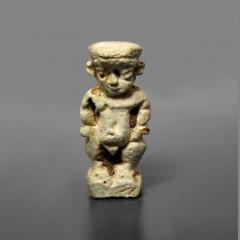Early Byzantine Terracotta Ampulla Of Saint Menas With Inscription
Item Description
C. 5th-6th century AD
A nice example of a terracotta ampulla decorated with Saint Menas within a border of studs. Saint Menas stands with his arms outstretched in blessing. He has curly hair and wears a short tunic, a long cloak, and is flanked by camels. The other side features a Greek inscription within a laurel wreath, which reads: “ΕΥΛΟ ʹ ΓΙΑ ΤΟΥ ʹ ΑΓΙΟΥ Μ ʹ ΗΝΑ”. (A blessing of Saint Menas).
Ampullae were used by pilgrims to bring home holy water or oil from pilgrimage sites and these could be purchased from outside the shrines of a revered saint. The lure of the ampulla as an object capable of bestowing holy miracles gave it the same appeal as a relic.
Saint Menas was one of the most important martyr-saints of the East, whose parents were originally from Egypt. He was a late-third-century Egyptian Roman soldier who was martyred for his Christian faith around the year 296. His remains were secretly loaded onto a ship by some Christians, which was heading to Egypt. The ship was attacked by sea-monsters, which was conquered by the power of the Martyr’s relics. Once they had reached Egypt, the camels returned his body for burial.
Damage to neck otherwise an interesting piece with good detail.
Provenance: Ex J. M. Collection from the 1980’s.
Ref: Similar example in the British Museum, Registration number 1876,0520.4.
Size: 74mm width x 88mm height
£375.00
No Longer Available
